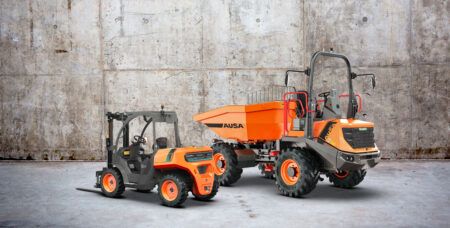The first counterbalanced trucks with a lithium-ion battery from Linde Material Handling have been launched. They offer fleet operators the ability to increase their independence from power supplies, especially in multi-shift operation. This is due to the higher energy density and efficiency of the battery cells, as well as the fact that interim charging is possible any time. These factors result in significantly longer uptime.
They made their debut at this year’s World of Material Handling customer event, where Linde explained how its multi-stage safety concept ensures that the operator and warehouse environment are safe when using lithium-ion forklift trucks.
The safety features start at the cell, module and battery levels and prevent damage caused by excess pressure, overheating as well as overcharging or deep discharging. Additional protection is provided by the installed shock sensor, which monitors impact on the battery and prevents misuse. Also, a patented system converts regenerative braking energy into heat instead of feeding it back into the battery when there is a risk of overcharging.
The management system monitors all battery parameters, informs the operator about possible battery-damaging behavior and ensures that the vehicle is placed in a controlled state in the event of a technical defect. A battery compartment of 25 mm thick steel protects the cells against damage from the outside.
The trucks were put through their paces in a roundabout-test and, for the first time ever, the functionality and stability of the complete system electric truck including battery – were tested. “With lithium-ion electric trucks it’s no longer necessary to use external power supply to carry out this test,” says Daniel Butte, head of product management for forklift trucks. This hasn’t been possible with trucks fitted with lead-acid batteries because the constant vibrations would damage the battery.
Additionally, the truck with li-ion battery mastered the crash test, in which a fully loaded 8-tonne forklift driving at top speed crashed into the side of a 3-tonne electric forklift. The fork did not penetrate the lithium-ion battery compartment.
Customers in a wide range of industries field tested the trucks, too. “Consistent performance during operations, time gained through interim charging, the elimination of a replacement battery, and obsolete battery maintenance were among the most frequently cited advantages,” says Butte.
For each of the five truck models in the load range from 1.4 to 1.8 tonnes, there are two battery capacity choices smaller and larger. “If interim charging is easily possible during operations, the smaller battery usually suffices,” says Butte.
The Linde E14 and E16 C (compact), it has a capacity of 13.1 kWh, while the battery for the larger three-wheel models, E16 and E18, and the four-wheel model, E16 P, has 16.3 kWh capacity. Linde recommends more powerful batteries, with 39.2 kWh and 45.7 kWh capacities respectively, if the operating conditions demand above-average performance from the trucks or if there is a need for vehicle availability over two shifts.
Two charging devices of different capacities are also on offer, which form a closed system together with the batteries. “The power of the charger and the battery size determine how fast a battery is charged,” explains Butte. “It takes about 50 minutes to charge a completely flat small-capacity battery with the large charger. Charging a maximum capacity battery with the small charger can take more than six hours.”
Customers who buy a Linde E14 to E18 ION, will receive a CE-certified complete system consisting of the truck and the battery, which is matched to the application requirements. Linde guarantees 2,500 full charging cycles with a subsequent remaining capacity of the battery of at least 80 percent.
November 18, 2016




